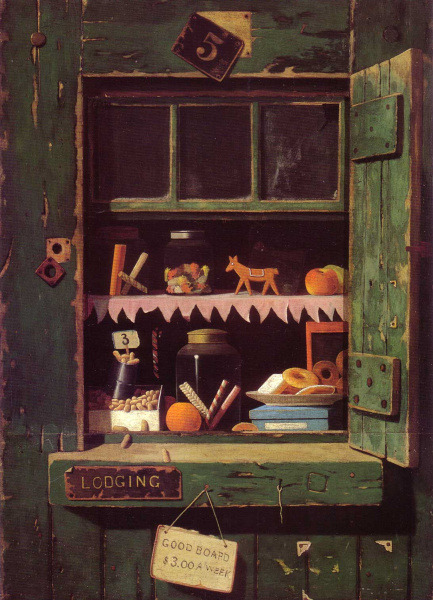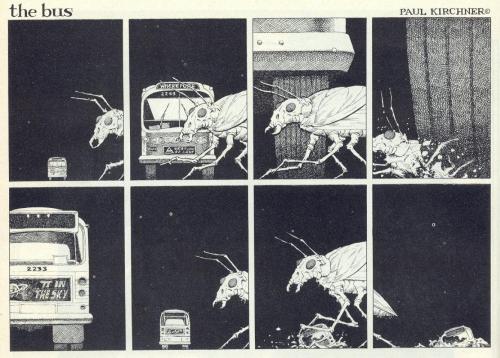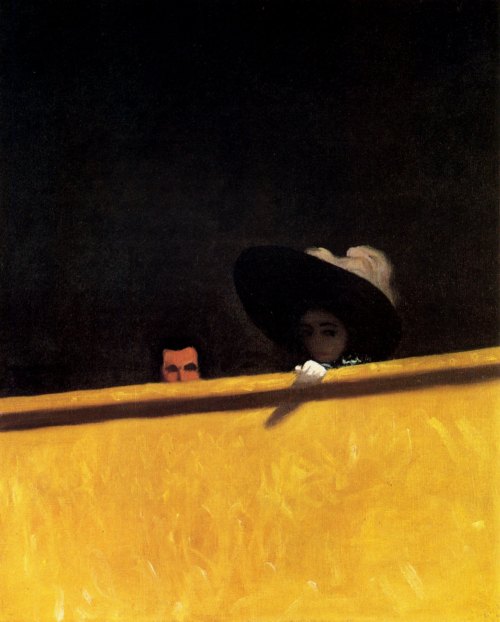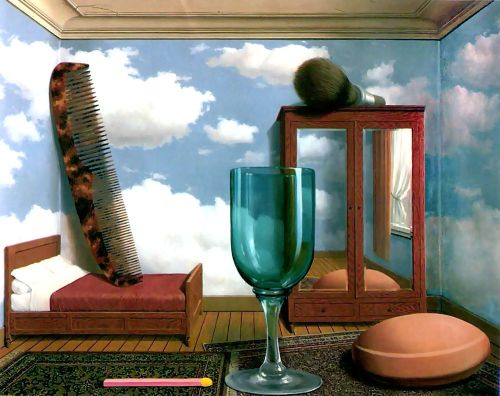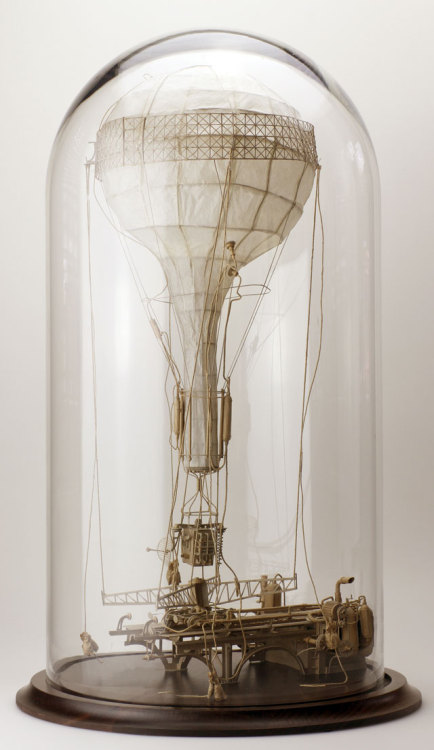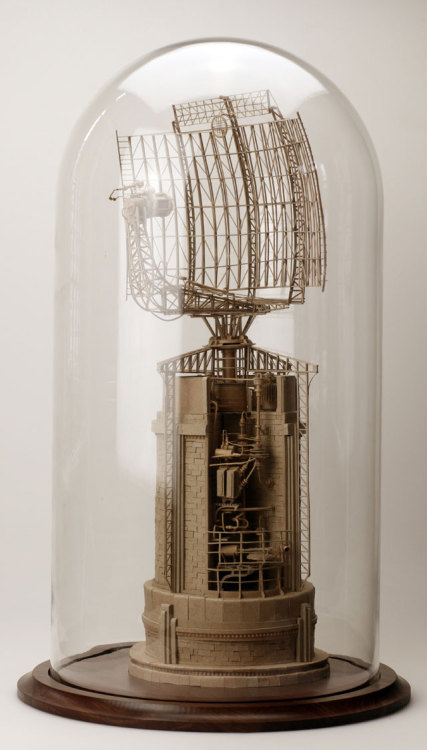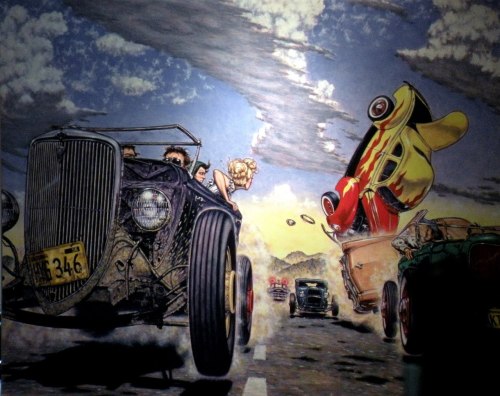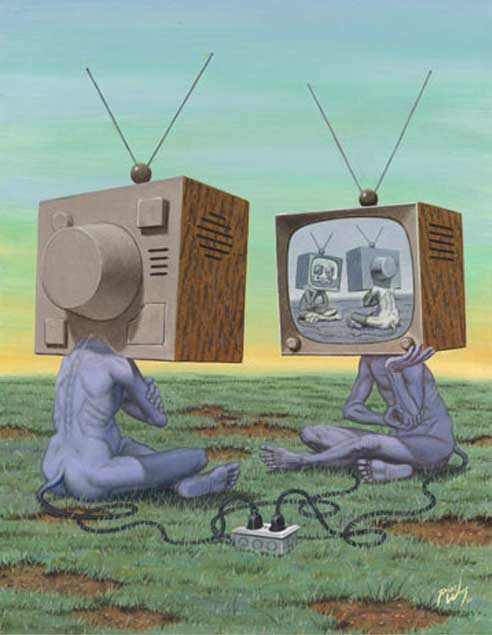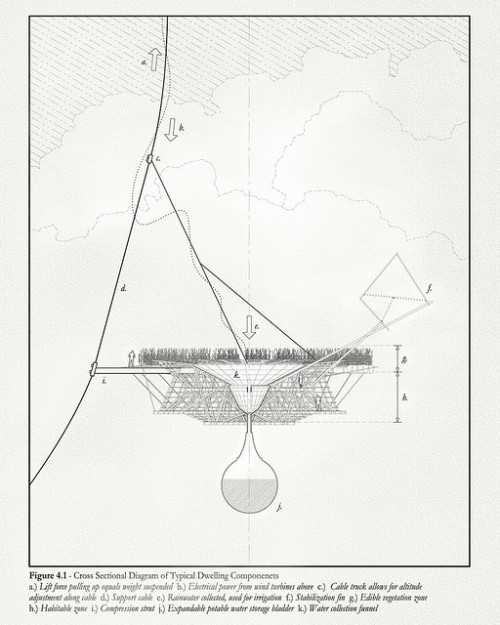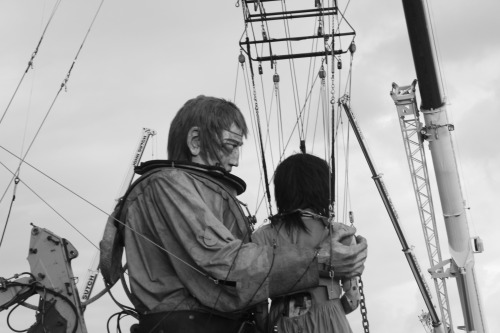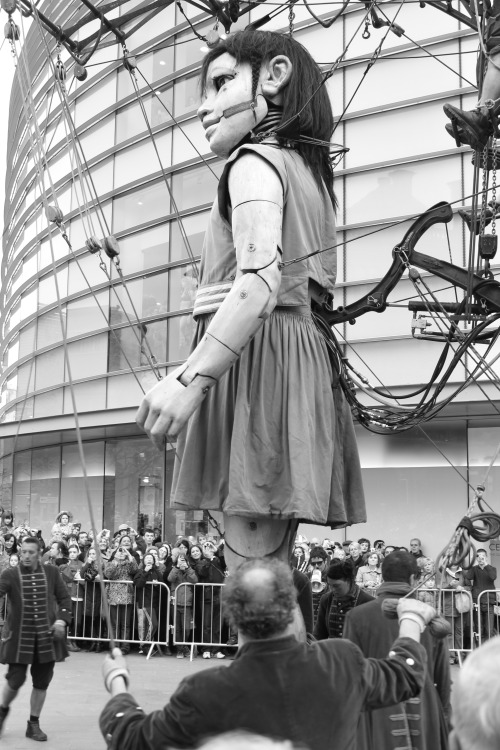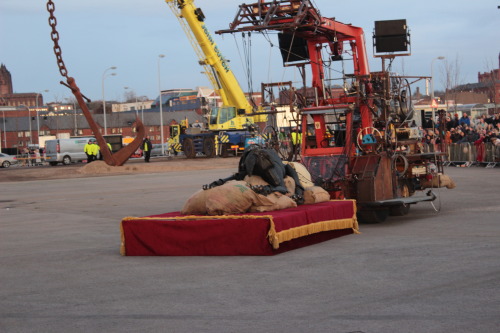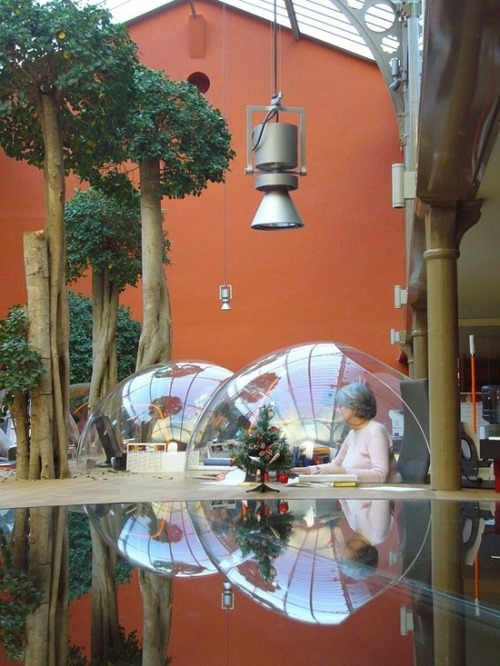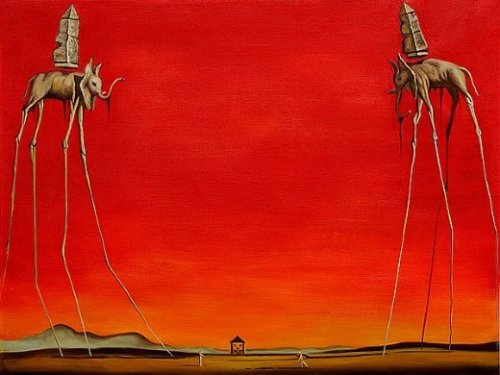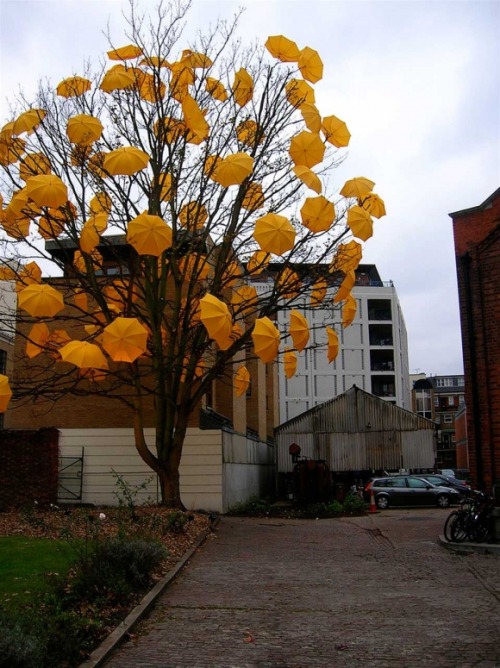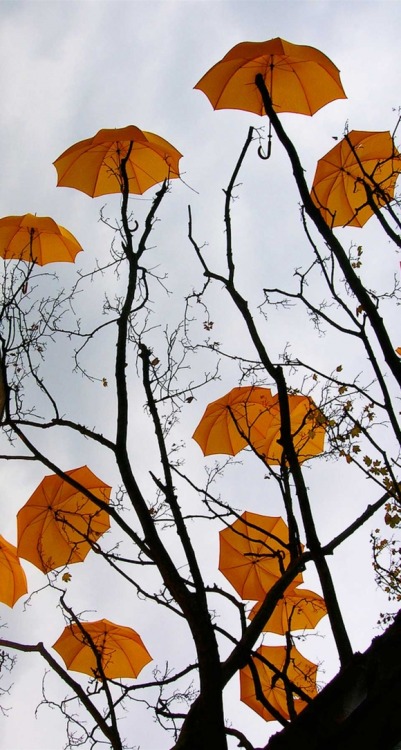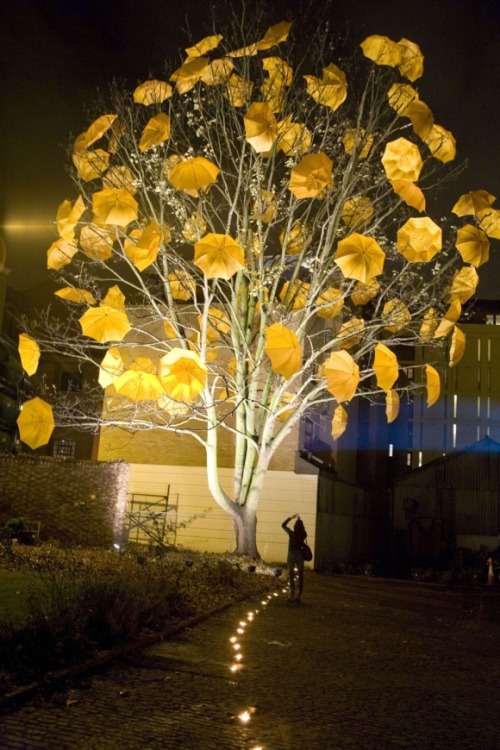Here's one of my favorite, and quite controversial, pieces from Dark Roasted Blend ... and now, of course, in my brand new book:
Welcome to Weirdsville
No one is immune:
tyops typos slip in, numbers get misdialed, directions are screwed up. We all make them; no one is perfect.
Accidents happen.
Which makes this piece a runner-up for a
no duh award. After all, the people involved are just like the rest of us, with the same quirks, frailties, and lapses of judgment that everyone else has. The fact that they were trained professionals, that they’d be trusted with world-shattering responsibility, is inconsequential.No one on this globe, ever, has gone through his or her days without making at least one, and more than likely millions, of accidents.
Or, as a witty bumper-sticker put it: shit happens. That these particular instances of crap could easily have reduced a sizable hunk of this world to a Geiger-clicking pit doesn’t make them any different than any other form of ‘oops’.
Except that these mistakes involved thermonuclear weapons.
Ever since man split the atom, it seems, he’s been dropping the little suckers.Oppenheimer and those wacky guys at the Manhattan Project even started the trend, with their precious little game of trying to guess if that first atomic firecracker was going to set the atmosphere on fire. Though every time I hear that story I wonder what the posted odds had been.
While I don’t have the time or the space to list all of them, here’s a sample of nuclear boo-boos guaranteed to make you at least look up the next time a plane scrawls a contrail across the sky, or go fishing.

Just a few years after Oppy and crew turned a piece of the American desert into a glowing tourist spot, a B-36 putting its way from Alaska to Texas had a slight problem staying in the air. Luckily for the crew they managed to drop their bombs, which fell 8,000 feet, landing with a bang off the coast of British Columbia. Luckily for Canada only the bombs’ high explosives went off, not their nuclear cores. It was a very nice opening shot, a 1950 intro to ‘nuclear weapons accidents’.
Eight years (and several similar accidents) later a bomber from Hunter Air Force Base, Georgia made a severe
ooops when it dropped its cargo of one nuclear device onto the backyard of the Gregg family in South Carolina. Fortunately for the Greggs, and South Carolina, again ONLY part of the bomb that went off was the ordinary component of the warhead which injured six members of that clan and made a nice divot in their garden: a hole 70 feet wide and 30 feet deep. The blast also took out five other houses and damaged a church. For almost irradiating a sizable hunk of the US, the Air Force coughed up $54,000.
One of my favorite atomic butter fingers is the one that almost plays out as a Zucker Bro’s gag: A bunch of US sailors at a Scottish base, rollicking it up, maybe wolf-whistling at some highland cutie, did a boo-boo and dropped (yes, I said dropped) a fully-armed Poseidon missile some twenty or so feet. It is pretty safe to say that the base laundry was very busy that night getting stains out of underwear.
Another tragic yet almost comedic incident of near nuclear devastation occurred in 1980, this time with almost Pythonesque timing. A sudden explosion in a Titan missile base near Little Rock, Arkansas popped the top of a silo off like a cheap champagne cork and tossed the missile’s 9 megaton warhead straight up. Landing some 1,000 feet away, it was later found to be pretty much intact.
Like said, this little piece is much too short to do into the couple ... no, wait, that isn’t quite fair,
more like the dozens and dozens and DOZENS of nuclear weapons mishaps that have livened up the lives of US and international servicemen. But I haven’t even touched on the ones that got away.
Imagine if you will, some sport fisherman trying to forget a hectic few months at the office by hooking himself a handsome marlin. He’s out there, casting and reeling, casting and reeling, letting those stressful workdays melt off as he imagines how nice that deep sea beauty will look on his office wall, when he has a nibble, then a bite.
And, boy, what a bite!
In a hot flash of atomic fusion, the ocean for miles around simply vanishes in an expanding bubble of superheated steam. The shockwave travels through the surrounding ocean, a compression sledgehammer that kills everything it encounters, reducing life and the sea floor into component molecules. For a moment, the sun blooms under water.
It would be inaccurate to say that there are a few stray thermonuclear devices ‘floating’ around out there because there are certainly more than a few.
In 1957 a C-124 hauling three atomic devices from Delaware across the Atlantic suddenly developed serious engine trouble. The crew, rather than ride the nukes down to the briny deep, dropped their cargo somewhere between Rehobeth, Delaware, and Wildwood, New Jersey. Got that? Get your charts out and rent yourselves a boat or two, because there’s nuclear treasure to be found out there.
The very next year a B-47 smacked into another plane, spilling it’s own atomic cargo into the ocean off of Savannah, Georgia. They looked and they looked but they couldn’t find it. Savanah used to be quite a lovely city...
Also in 1956 (not a very good year for the military) another B-47 bomber flying to Europe vanished without a trace. Poof! In addition to one very excellent aircraft, the Air Force also lost a nuclear device.
Somewhere sperm whales are using it for a back scratcher: in ‘65 an A-4E jet simply fell off the USS Ticonderoga as it steamed somewhere near the coast of Okinawa and sank in 20,000 feet of water. That little plane was also carrying one hellava large bomb and, somewhere in all that water and pressure, it’s still there.
The Russians have also had their own share of nuclear mishaps, and while we haven’t heard about most of them , the ones we HAVE heard of it enough to make you pack your dehydrated beans and go live up in the hills. For instance, in 1986 a Soviet Yankee class nuclear sub sort of .... well, sank some 600 miles from Bermuda. In addition to its own nuke power plant, this fine example of Russian engineering was also carrying a few thermonuclear weapons ... 34 of them to be exact.
My all-time favorite, and the one that spawned this little trip to radioactive weirdness, is this little tidbit of cold war fear. While it doesn’t rank with 34 missing warheads, you’ll see how that doesn’t necessarily mean that this story has what you’d call a happy ending.
In 1961 a B-52 decided to do a shake-and-shimmy over North Carolina, dropping two 24-megaton nuclear weapons. One of the little toys released its parachute and glided down to a less-than-gentle landing.
The other device though smacked down somewhere in waterlogged farmland.Not at sea, not in 20,000 feet of water, not ‘off the coast’ of anywhere.Farmland, near North Carolina. Anyone live in North Carolina? Come on, a show of hands … gee, quite a few of you. Isn’t North Carolina a great place to live? You might, though, consider a quick relocation because even though this little boo-boo happened over twenty years ago the capable US military never recovered that little gizmo. It’s still out there. Tick, tick, tick, tick...
I can hear some of you die-hard optimists mumbling something about ‘safety’ and ‘redundant backups’. Well, you just keep mumbling that comfortable little mantra to yourself while I casually bring up that other bomb, the one that parachuted down. Well, while they found that little fissionable puppy, the guys that inspected it found something very interesting. You see, a device of that type has six safety devices -
- and five of them had failed.
Good night, America, and all the ships at sea. Sleep tight, don’t let the bed bugs bite, and always remember: accidents will happen.

